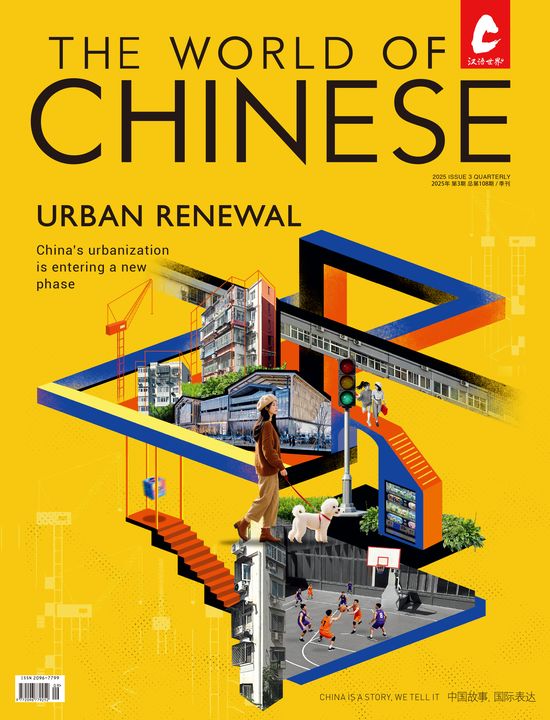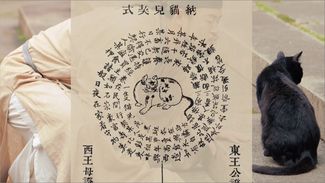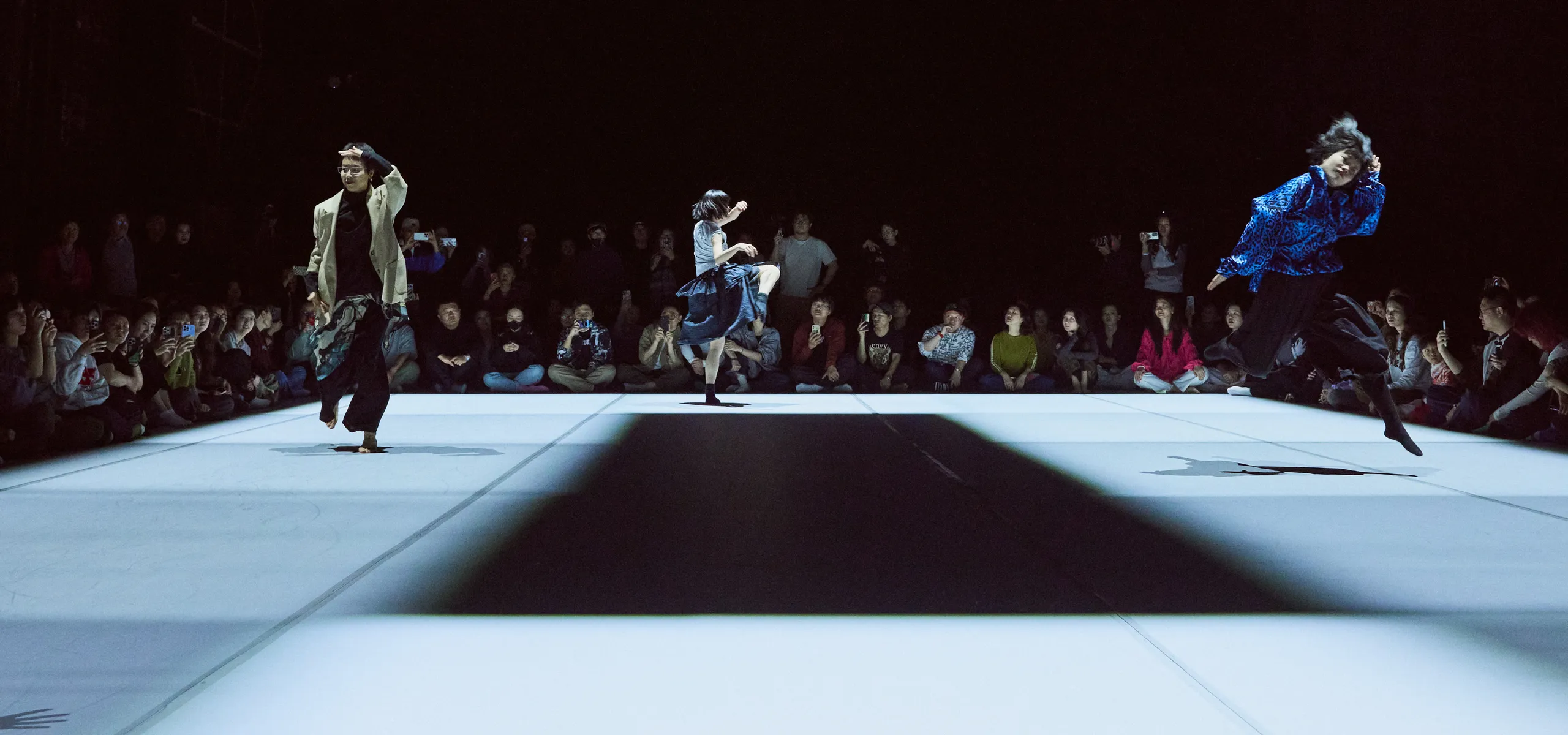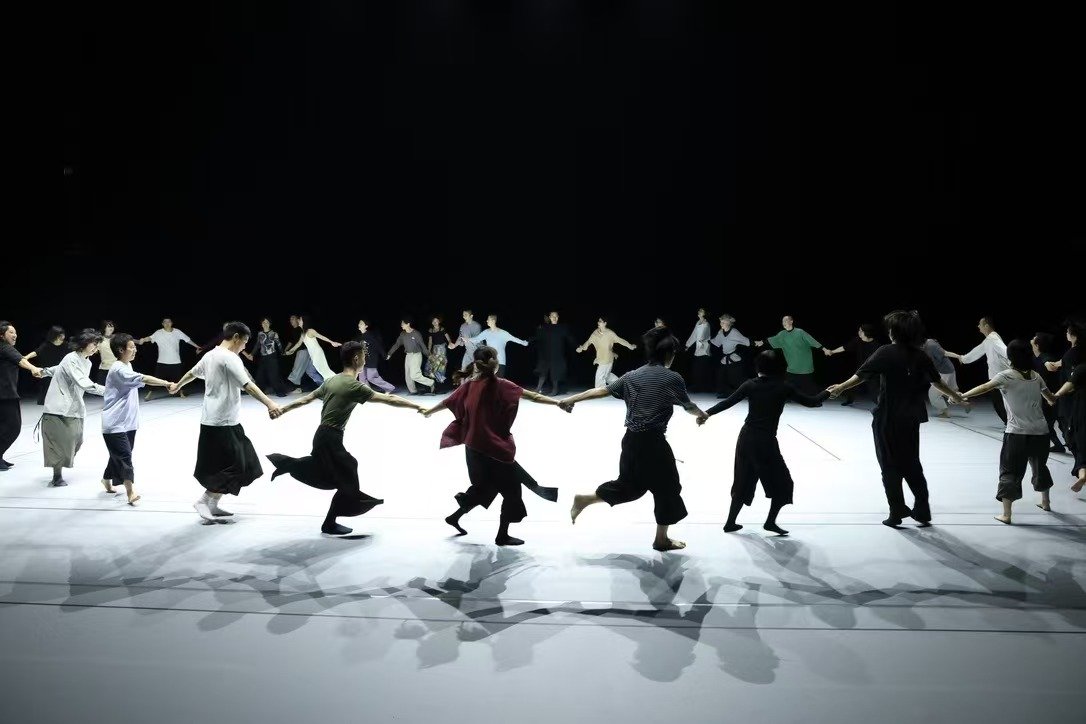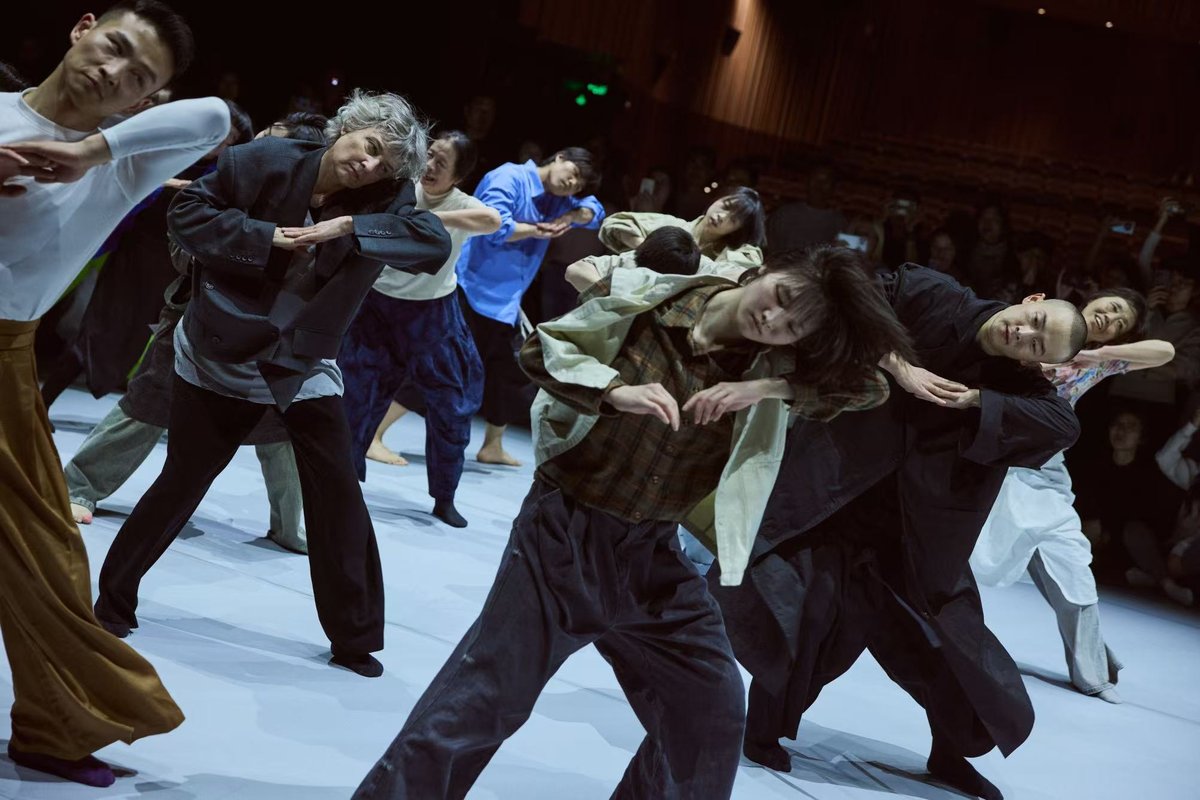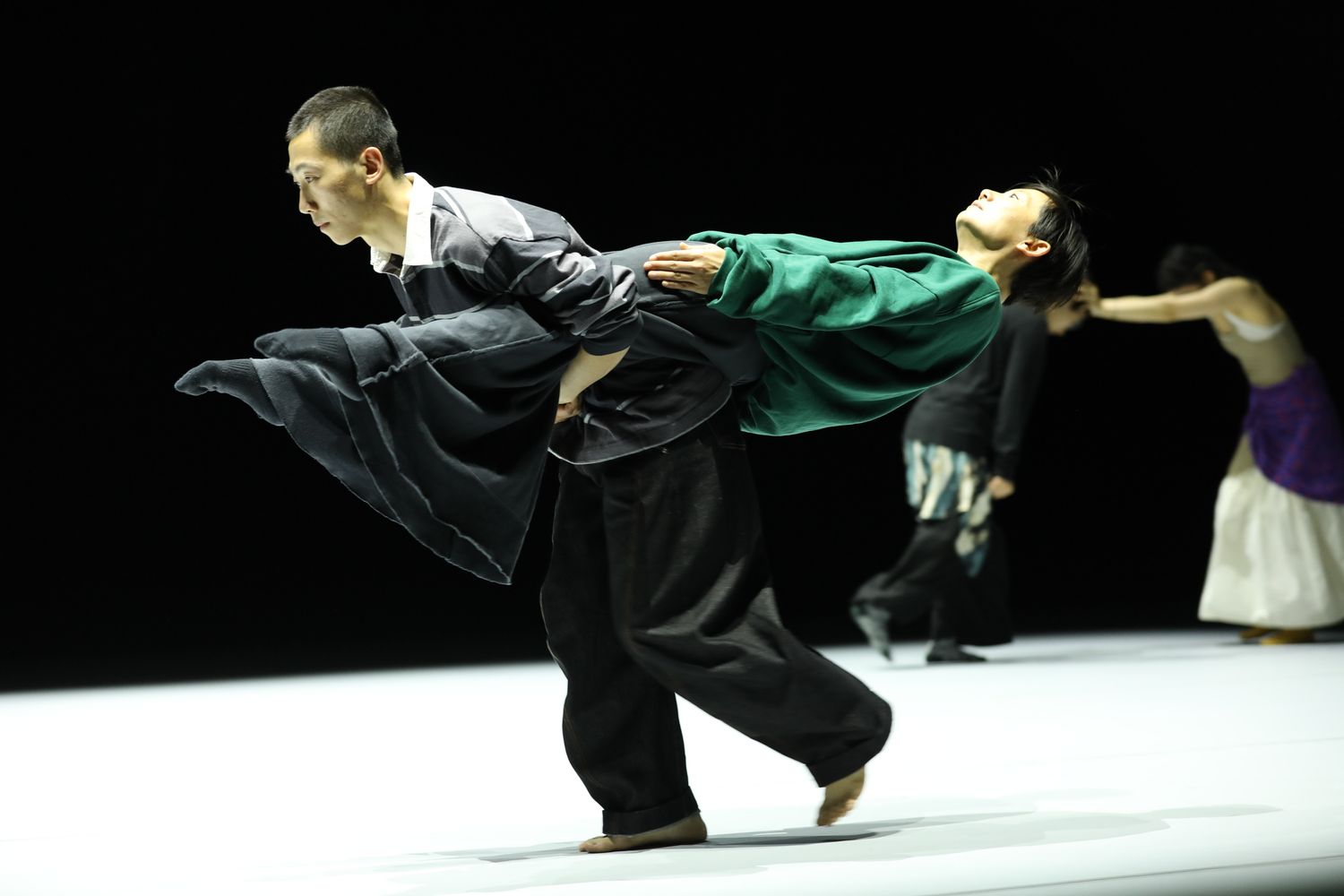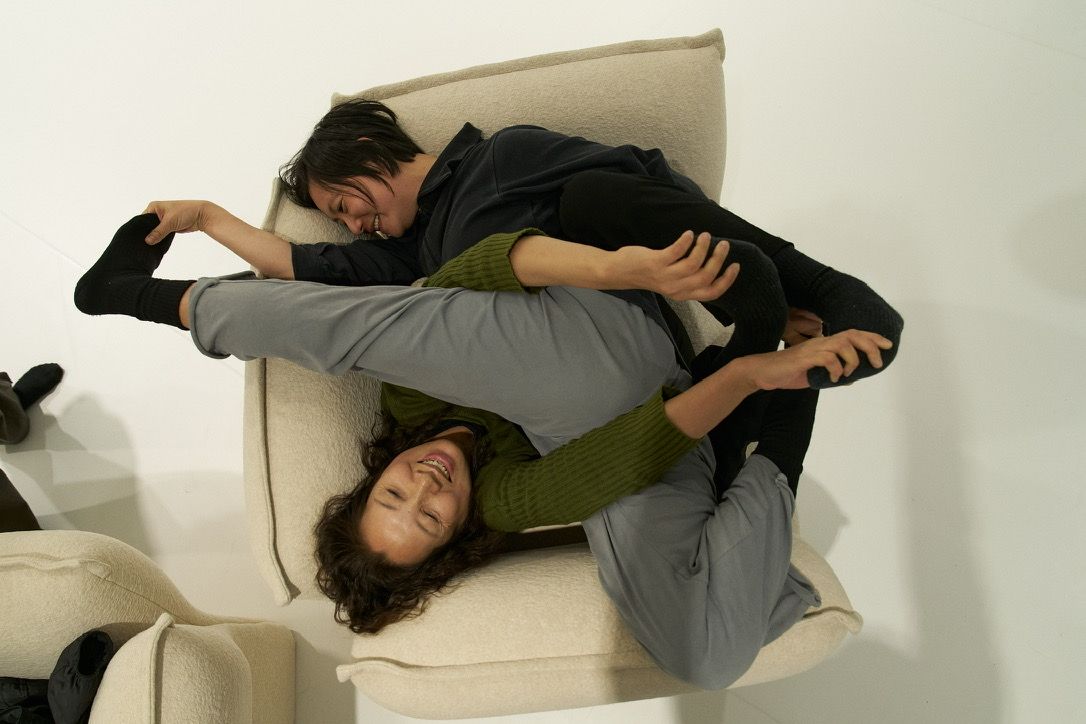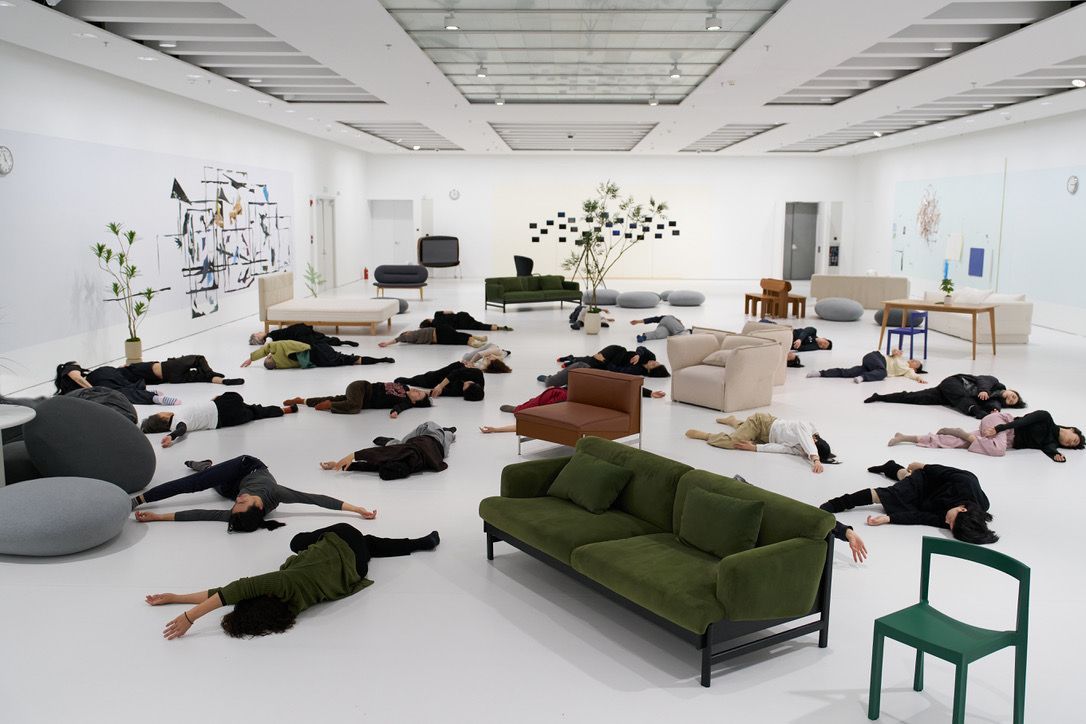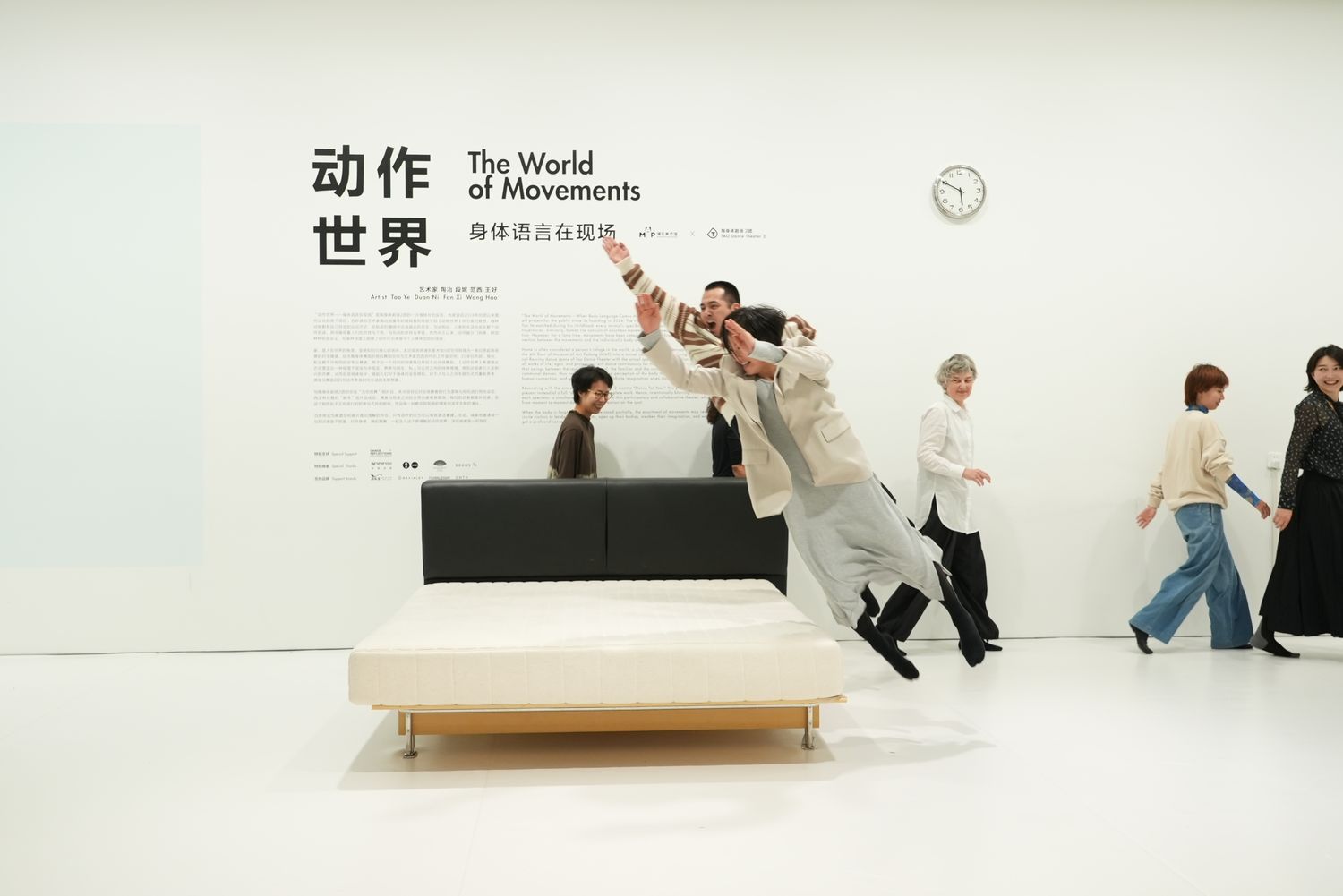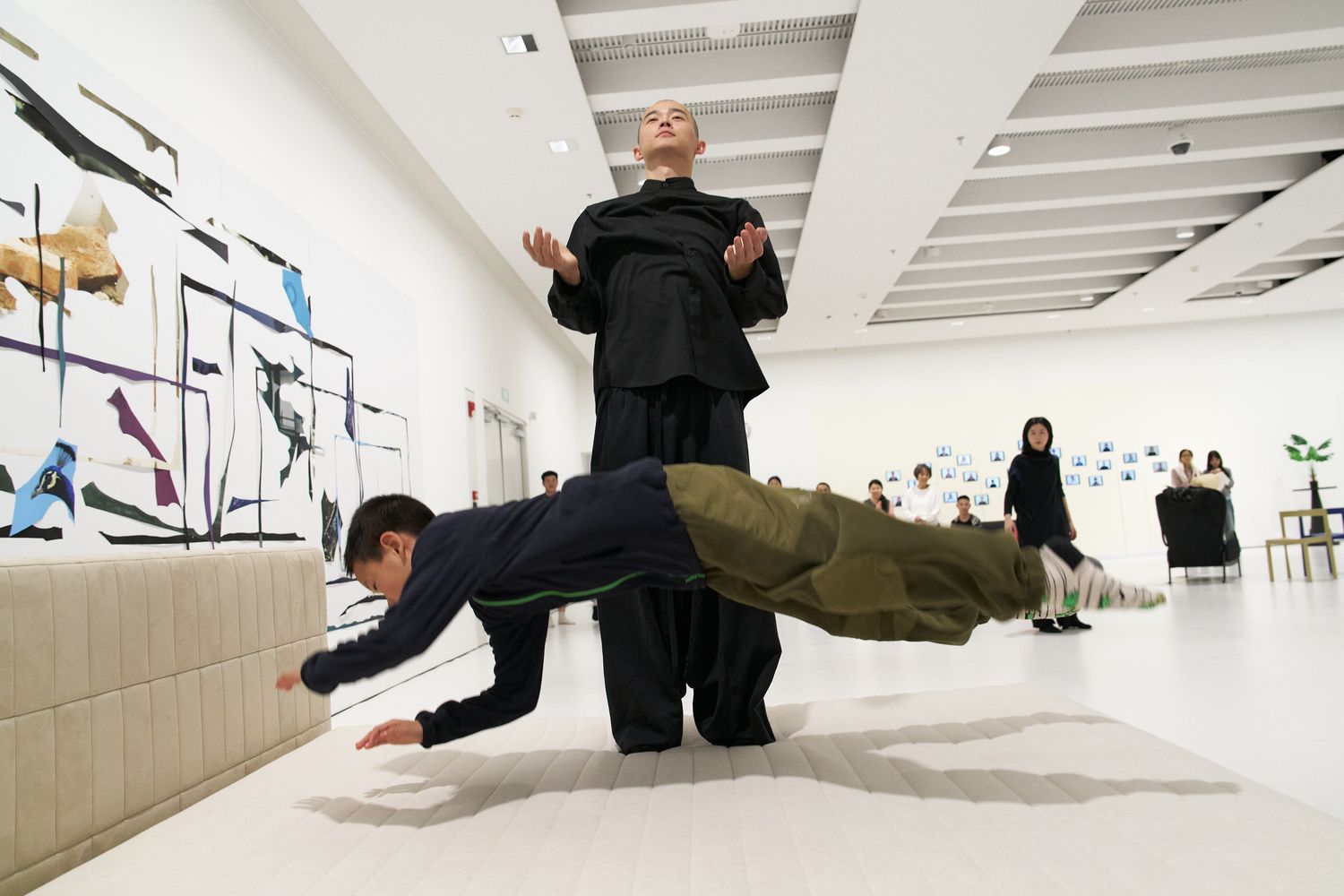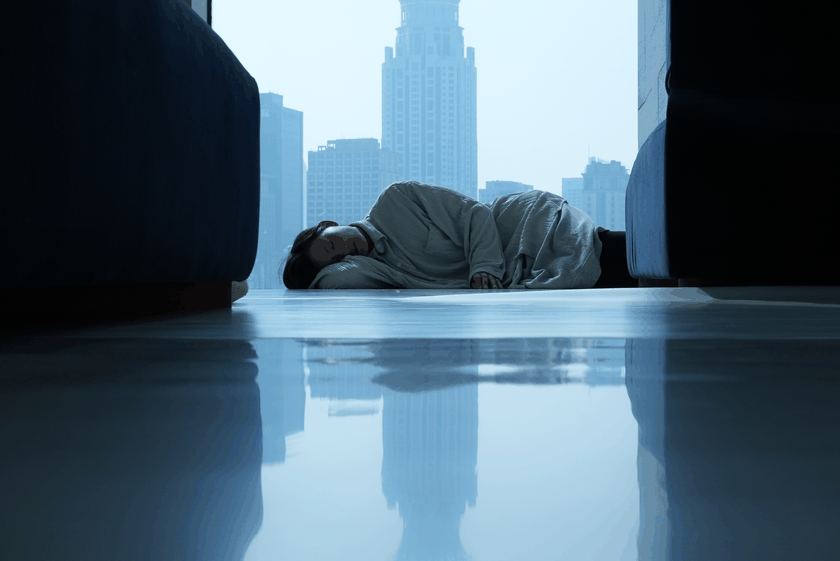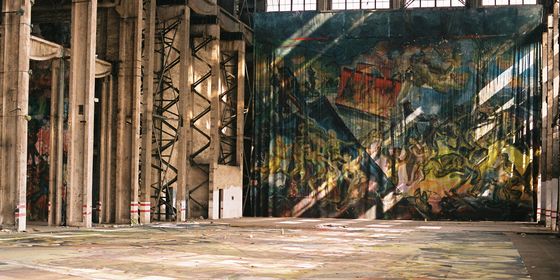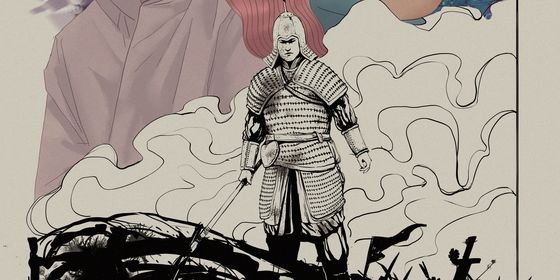Since its founding in 2008, TAO Dance Theater has pushed the limits of physical movement—now it’s inviting amateurs to do the same
On stage, a 30-meter U-shaped corridor glows under a wash of cold white light. The audience lines both sides, sitting cross-legged and silent, just inches away from the performers. A looping electronic soundtrack—steady, distant, detached—starts to hum overhead, then the bodies appear. First, one by one, then in pairs, then in groups. Like the music, the bodies form a constant, kinetic loop; but no two people walk the same. A man in black with a shaved head spins as he moves, his body whirling like a human gyroscope. A long-haired woman marches ahead, pausing to throw invisible high-fives into the air, grinning to no one. Another form follows, hunched low, hands on ankles, spine curled, bouncing forward in stiff, zombie-like jolts.
This unconventional display was part of “The World of Movements—Infinite Walking,” performed by the TAO Dance Theater at Shanghai’s West Bund Theatre in mid-April. Clips of the two-day performance soon went viral and ignited fierce debate online. Some commenters dismissed the spectacle as bizarre, even unsettling. Others hailed it as a liberating expression of individuality, brimming with life.
Discover more about contemporary Chinese art:
- The She-Warrior of Art
- When Art Meets the Authenticity of Labor
- Too Rich: Wealth and Peril in Huang Heshan’s City Dreamscapes
At a discussion prior to the event, Tao Ye, co-founder of TAO Dance Theater, set the tone, asking rhetorically: “Why can’t we walk like this?” adding, “Walking is the first movement we learn...Yet somehow, almost everyone ends up walking the same way. Art lets us imagine other ways of moving, other ways of being. How you walk—how you live—should be yours to define.”
Since its founding in 2008 by Tao, Duan Ni, and Wang Hao, TAO Dance Theater has become one of China’s most internationally recognized contemporary dance companies. Best known for its “Numerical Series”—each showcasing a test of the body’s limits and represented by a digit—the troupe has toured more than 40 countries across five continents, performing at over a hundred art festivals worldwide. The series has been featured in The New York Times several times and was named one of the world’s top 10 dance performances by Time Out New York in 2014.
In 2023, TAO was awarded the Silver Lion for Dance at the Venice Biennale, making Tao Ye and Duan Ni the first Chinese artists to do so, as well as the first Chinese awardees since composer Tan Dun won the Golden Lion for Lifetime Achievement in Music in 2017.
While the precisely choreographed “Numerical Series” is the work of the 20 or so professionally trained dancers of TAO’s main ensemble, TAO 1, “The World of Movements” series takes a different tack, being the product of TAO 2—a second ensemble made up of dancers without traditional professional training. This more ad hoc group was founded in August 2024 with one simple mission: “Dance for you, dance for yourself.” Embracing the belief that the body is the first medium of artistic expression and the tool at the heart of theater itself, TAO 2’s creative vision is rooted in advocating for performance as daily life and bringing this philosophy to a wider, more diverse group of people from all walks of society.
One recent adherent is Huang Shili, a 64-year-old from Jingzhou, Hubei province. During “Infinite Walking,” she was dragged across the floor by her ankles, her body limp and eyes fixed on the ceiling, as a man in neon green pants pulled her along.
“I’m already in my 60s—I never imagined I could join a professional company and perform,” Huang, who joined TAO 2 last year and has no formal dance experience, tells TWOC. “But when I saw they were accepting people aged 18 to 80, I thought, why not give it a try?”
A retired staff member from Jingzhou’s Yangtze University, Huang says her love of dance began in childhood. “After I retired, I joined an amateur folk dance troupe in Jingzhou. We mostly danced for fun, though we did perform on various stages, and even appeared on CCTV. But contemporary dance like TAO’s? I had never experienced anything like it before.”
TAO 2 is open to anyone of adult age—regardless of gender, profession, or nationality—who is physically fit to dance. Its audition criterion centers around one premise: being different, valuing each dancer’s uniqueness and individual expression over uniformity.
“In folk dance, we’re taught to hold everything tight—tuck in the belly, lift the chest, keep a perfectly upright posture,” Huang says. “But contemporary dance was completely different. You had to relax, sink your weight, and let go. It challenged everything I thought I knew. How could you possibly dance well like that?”
“At first, I just followed the teacher’s guidance and tried to loosen up. Gradually, I started to feel it. And once I did, it was incredible—my whole body felt more open, like my energy was flowing more freely,” she says, recalling the experience with wonder. “I realized that when you dance in a relaxed way, you can really use every part of your body—your nose, ears, hair, toes, fingers, feet, ankles. Each of them can draw a circle, a line, even spin, just like that!”
As well as blurring the line between professional and non-professional dancers, TAO 2’s performances also look to reimagine the boundary separating performer from audience. Part of this is done via the conscious democratization of its performances, which often take place in museums, outdoor spaces, and local communities. The goal is not merely to perform, but to awaken each body’s kaleidoscopic potential.
The co-founder Tao traces the concept behind “The World of Movements” back to his childhood memories of watching wildlife documentaries. “Every animal has its own specific way of moving,” he tells TWOC. “Their paths intertwine and form a kind of coexistence.” He believes human life—shaped by countless gestures that express both individuality and interdependence—is no different. Yet for too long, Tao says, human movement has been labeled, categorized, and defined—separating it from the body’s natural sense of awareness.
With “The World of Movements,” TAO Dance Theater invites audiences to rediscover the body as a living, expressive medium—and perhaps, to reimagine what it means to move, to feel, and to be.
Another participant at April’s event was 43-year-old Jin Xiaoyan from Shanghai. For her, awakening the body’s potential carries a different weight. “I’m in my 40s—a stage of life that can feel a bit awkward,” she tells TWOC. “I’m not young and fearless anymore. Sometimes I hesitate, thinking I’m too old to try something new. But my son encouraged me. He said, ‘Mom, just give it a go. How would you know you’d be chosen if you don’t even try?’”
At “Infinite Walking,” she paired with another performer to flip back-to-back in smooth, continuous somersaults, rolling like a human pinwheel.
Despite her apparent confidence and agility, Jin has for the past two decades struggled to maintain her physical independence. A former martial arts athlete, Jin suffered a dislocated hip during training in 2001, which left her unable to walk and forced the end of her professional career. Even after surgery, the injury brought long-term complications and chronic pain. “The doctor basically sentenced my leg to death,” she tells TWOC. “They told me I’d likely be in a wheelchair soon. I’m 43, but my leg’s condition is more like that of a 60-year-old’s.”
Still, Jin refuses to give in. “I can’t accept fading away in midlife,” she says. “I’ll do everything I can to push myself, try new things, and break through my limits. That’s what gives my life meaning.”
Though the rehearsals took her to the brink, Jin continued to test the limits of what her body could do. “Each of us had to come up with our own walking movement—it was a process of co-creation,” she tells TWOC. “I really struggled with that part. And because I have a stubborn streak, I challenged myself to do the human pinwheel, one of the most difficult movements. It was a spur-of-the-moment decision—I just thought, I can do it, I want to try.”
The ensemble had just two days of rehearsals. On the second day alone, Jin trained for 13 hours. “My legs were aching, my energy was gone,” she says. “But as long as the pain was within my threshold, I didn’t want to give up.”
The stage performance of “Infinite Walking” is only the most recent of many unforgettable chapters within the “The World of Movements” series. Earlier iterations of the project—such as at Tianmuli Art Museum in Hangzhou last September, and the Museum of Art Pudong (MAP) in Shanghai this February and March—offered even more immersive experiences.
In these “living art” environments, movement became a way to connect with oneself and with others. The performance at MAP, for example, was designed as a distilled version of modern life: Sofas, beds, greenery, and pristine white flooring evoked the image of a shared “home.” Visitors were asked to remove their shoes before entering the space, where they could lie down, move freely, or even sit and work on their laptops. With everyone dressed in casual, everyday clothing, it quickly became difficult to tell the dancers from the participants. The latter were free to rest or observe at any time, and the only guiding rule was to “protect the body,” ensuring everyone could engage at their own pace and comfort. Interaction was therefore something not imposed, but rather, emerged naturally through the presence and choices of each person.
In addition, simple games invited quiet self-awareness and connection. In the “mirror game,” for instance, a performer might silently imitate a visitor’s movements, revealing unconscious habits; while the “puppet game” invited others to place the limbs of dancers or audience members in different positions. Others leapt onto a trampoline within a double-bed frame—expressing themselves however they liked, without choreography or judgment. Finally, the “seven-senses” portion invited visitors to be blindfolded, taking away their dominant sense—sight—before being guided by dancers through the gallery and forcing them to tune into other modes of perception. This free, ruleless improvisation became a primal form of expression, and the space overflowed with instinctive motion and unfiltered emotion.
Wu Yanjun, a 38-year-old theater director and TAO 2 dancer, recalls how one of the performance’s most powerful moments took place during this blindfold session in Shanghai. At one point, an audience member whom he had been working with stopped near the museum’s glass wall overlooking the Huangpu River. “After the session, I asked him to open his eyes very slowly,” Wu tells TWOC. “As he did, I saw his tears quietly fall.”
Sensing something deep had surfaced, Wu offered space rather than conversation. Later, Wu watched as the man tried to rejoin the group, only to turn away and walk into a quiet corner, where he suddenly broke down, sobbing.
“That moment felt like a powerful connection—wordless but deeply resonant,” Wu recalls. “You could feel his pain, his pressure, his release. And yet, no words and eye contact were needed—just a shared emotional current that neither of us could fully explain.”
For Ge Hui, 32, from Hangzhou, “The World of Movements” is a revelation. She first attended the performance as an audience member in 2024, drawn to the open, accepting atmosphere where movement was free, spontaneous, and deeply personal.
At the time, she was recovering from a personal crisis and emotional trauma, feeling that certain parts of her body were “blocked.” “Through movement, I began to release things I couldn’t put into words,” she tells TWOC. “It helped me reconnect with parts of myself I had long ignored.”
The experience was so powerful that she joined TAO 2 as a performer earlier this year. “I realized that movement had healed me,” she says, “and now I want to share that same healing with others, and that’s probably the meaning behind ‘The World of Movements’—to truly connect the body, mind, and spirit of oneself and others through dance.”
Every “Body” Dance Now: How a Chinese Troupe Is Moving Differently is a story from our issue, “Smart Nation.” To read the entire issue, become a subscriber and receive the full magazine.
